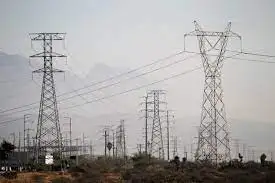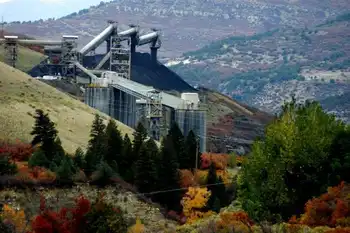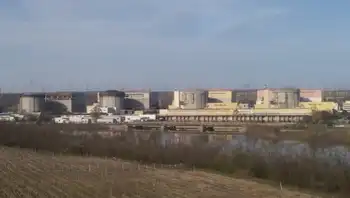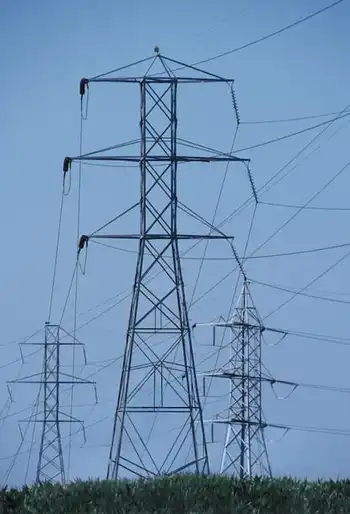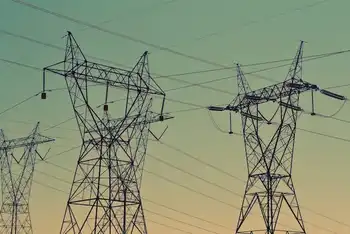Canada tries to take the lead on energy
By National Post
Arc Flash Training CSA Z462 - Electrical Safety Essentials
Our customized live online or in‑person group training can be delivered to your staff at your location.

- Live Online
- 6 hours Instructor-led
- Group Training Available
That's not even his biggest American headache. That is reserved for two dozen states that have declared Canadian hydro unacceptable as a "renewable" energy source to help meet new, cleaner standards as they rush to encourage home-grown alternatives to coal-fired power.
On the horizon, if a massive energy bill in the U.S. Senate passes as written, is a White House that has the power to impose unilateral carbon tariffs on Canadian imports that fail to meet its green litmus test.
The federal government's solution is to pretend away the border, aiming to match every move by the United States on greenhouse gas emission cuts, fuel standards and carbon-trading markets.
While Liberal leader Michael Ignatieff will campaign on Canada designing its own energy policy independent of its southern neighbour, Mr. Prentice insists it is not possible to act in isolation when the two countries share environmental and economic living space.
"If you have even modest differences in environment policies between Canada and the U.S., it influences where people make investment decisions. You could lose a hydrocarbon upgrader in Canada overnight just because you lay on an environmental cost they don't face in Louisiana."
His reference point on the climate-change challenge ahead is contained in a simple graph. One branch measures the Human Development Index; the other lists the power consumption per capita of various countries. Right at the peak of the chart, claiming best place to live honours as the most power-hungry pairing on the planet, sit Canada and the United States.
There you have it, shrugs Mr. Prentice. "If you want to reduce carbon emissions, there's a very easy way of doing it. You move yourself down the standard of living index."
Cleaning up the act between Canada's major oil export market and America's top energy supplier, without sacrificing quality of life or hurting the economy, has opened a Pandora's box of political friction along the border.
The federal government wants Canada's road map rolled out before heading to the Copenhagen climate-change summit in December, even though officials in the department are telegraphing it may not be possible if they are confronting a ghost for American policy.
"The biggest single challenge we face is that the Americans don't have clarity on where they are going," Mr. Prentice said in an interview.
"We have a good working relationship with the President, but you don't know what the Senate will do so we don't know where we're going to land."
The best guess of what's coming is a 1,400-page doorstopper called the American Clean Energy and Security Act, now languishing on the congressional agenda awaiting approval, amendment or, given how it barely squeaked through the House of Representatives last June, possible rejection.
It enshrines low carbon fuel standards for transportation, forces power producers to use a percentage of renewable energy in their generation process, proposes carbon trading and sequestration systems and introduces "border adjustments" to tariff-protect some American industry from goods imported from countries without adequate environmental safeguards.
Sponsor Henry Waxman's office refused to speak about the bill, but his officials insist it doesn't specifically target the Alberta oil sands, even though it does put up walls to importing hydro from Quebec.
What worries the industry are inadvertent threats to the oil sands, a legitimate fret given the legislative hiccup that almost banned oil sands crude for America's largest single buyer of fuel, the U.S. Air Force.
A section inserted into a 2007 clean-energy bill prohibited the use of dirtier non-conventional fuels for government agencies.
While aimed at "slowing the use of coal being liquefied into fuel for jets which kicks up clouds of greenhouse gases, the oil sands were legislative collateral damage," admits a congressional official.
That provision has since been watered down to exclude the oil sands.
But the lingering uncertainty in Washington clearly frustrates Jim Prentice to the point where the Minister muses about going it alone without having an American policy to photocopy. "The essential question for us is whether we should be proposing the North American standard that has some currency in industry and get ahead of it with something that's equal for everybody."
That seems problematic given apparent resistance from the Prime Minister's office.
Stephen Harper has embraced invisibility on the file, staying out of sight this week at a United Nations discussion on climate change while going high profile at a Tim Hortons headquarters the next day.
Behind the scenes, the government has assembled a special team of internal and external officials to help guide talks with the U.S., both at the bureaucratic level but also using outside input from former U.S. ambassador Derek Burney, former Harper advisor Bruce Carson and communications advisor Deirdre McMurdy.
So far, it is the rejection of Canada's clean, green hydro-electric power that has become the greater U.S. energy relations preoccupation inside the federal government.
Obama-backed legislation requires coal-fired power producers to derive 6% of their generation from renewable sources in the next six years, rising to 25% by 2020. One caveat is that Canadian hydro does not qualify as a source of environmentally friendly energy.
The way officials in the Senate argue it, merely plugging into foreign hydro would undermine the U.S. push to diversify into its own green industries.
"It's another illustration of an area where our interests as Canadians is to bring hydro on, but if you're looking narrowly in your state, you may want to build a solar industry instead," says Mr. Prentice. "They want to foster homegrown renewable energy instead of the most economical large-scale resource, which is Canadian hydro."
The battle over the oil sands, meanwhile, is growing in intensity, with various governors and mayors proposing low carbon fuel standards or blanket prohibitions on oil sands-derived crude.
Several states have proposed banning it for all public transportation or government vehicles.
And Dan Woynillowicz of the Pembina Institute in Calgary believes the attention is going to intensify.
"The global environmental movement looks at the oil sands as the thin edge of the wedge for dirtier fossil fuel. It's the poster child for the less desirable route we can head down."
American and Canadian oil producers are fighting back with a fleet of lobbyists and expert studies showing the oil sands bitumen kicks out only 5% to 10% more greenhouse gases than conventional U.S. oil and is even cleaner than some of the heavier crude coming out of California.
When Mr. Prentice talks about the challenge ahead in trying to squelch these various American rebellions against the oil sands, he equates it to a familiar carnival game: "It's like whack-a-mole," he says, "because you knock one down and it keeps surfacing somewhere else."





